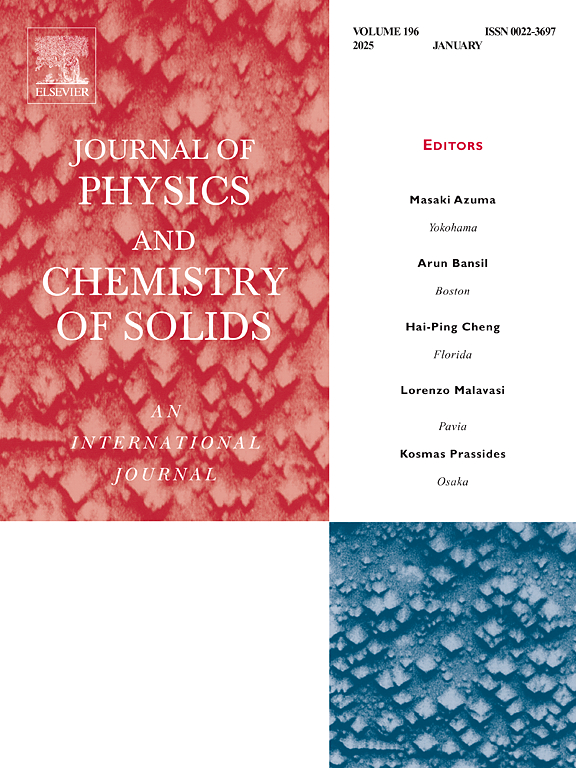Two steps hydrothermal synthesis of MoS2 - ZnO hybrid for the enhancement in electrocatalytic hydrogen evolution reaction
IF 4.3
3区 材料科学
Q2 CHEMISTRY, MULTIDISCIPLINARY
引用次数: 0
Abstract
The present work reports the successful synthesis of MoS2–ZnO hybrid using a two-step hydrothermal method. The properties of the synthesized samples were characterized by X-ray diffraction (XRD), field emission scanning electron microscopes (FESEM), X-ray photoelectron spectroscopy (XPS), Fourier transformed infrared (FTIR) and energy-dispersive x-ray (EDX) analysis.
FESEM results confirmed the successful synthesis of the MoS2–ZnO hybrids. XRD analysis indicated high crystallinity and purity of the MoS2–ZnO composites. The oxidation states of the different elements in the hybrid sample were confirmed from the XPS study.
The synthesized hybrid sample showed promise for its use as an electro-catalyst during the evolution of hydrogen by hydrogen evolution reaction (HER), which is much better compared to both the pure MoS2 and ZnO. The betterment has been confirmed from the linear sweep voltammetry that showed the hybrid exhibited a high exchange current density, whereas the values of overpotential for pure MoS2, ZnO, and hybrid, respectively, came as 428, 427, and 420 mV. Additionally, the small Tafel slope of 283 mV/dec for the hybrid sample indicates its efficiency as an electrocatalyst for practical HER applications. The least value of onset potential (−0.111 V) for the hybrid sample also supports the above claim.
求助全文
约1分钟内获得全文
求助全文
来源期刊
CiteScore
7.80
自引率
2.50%
发文量
605
审稿时长
40 days
期刊介绍:
The Journal of Physics and Chemistry of Solids is a well-established international medium for publication of archival research in condensed matter and materials sciences. Areas of interest broadly include experimental and theoretical research on electronic, magnetic, spectroscopic and structural properties as well as the statistical mechanics and thermodynamics of materials. The focus is on gaining physical and chemical insight into the properties and potential applications of condensed matter systems.
Within the broad scope of the journal, beyond regular contributions, the editors have identified submissions in the following areas of physics and chemistry of solids to be of special current interest to the journal:
Low-dimensional systems
Exotic states of quantum electron matter including topological phases
Energy conversion and storage
Interfaces, nanoparticles and catalysts.

 求助内容:
求助内容: 应助结果提醒方式:
应助结果提醒方式:


